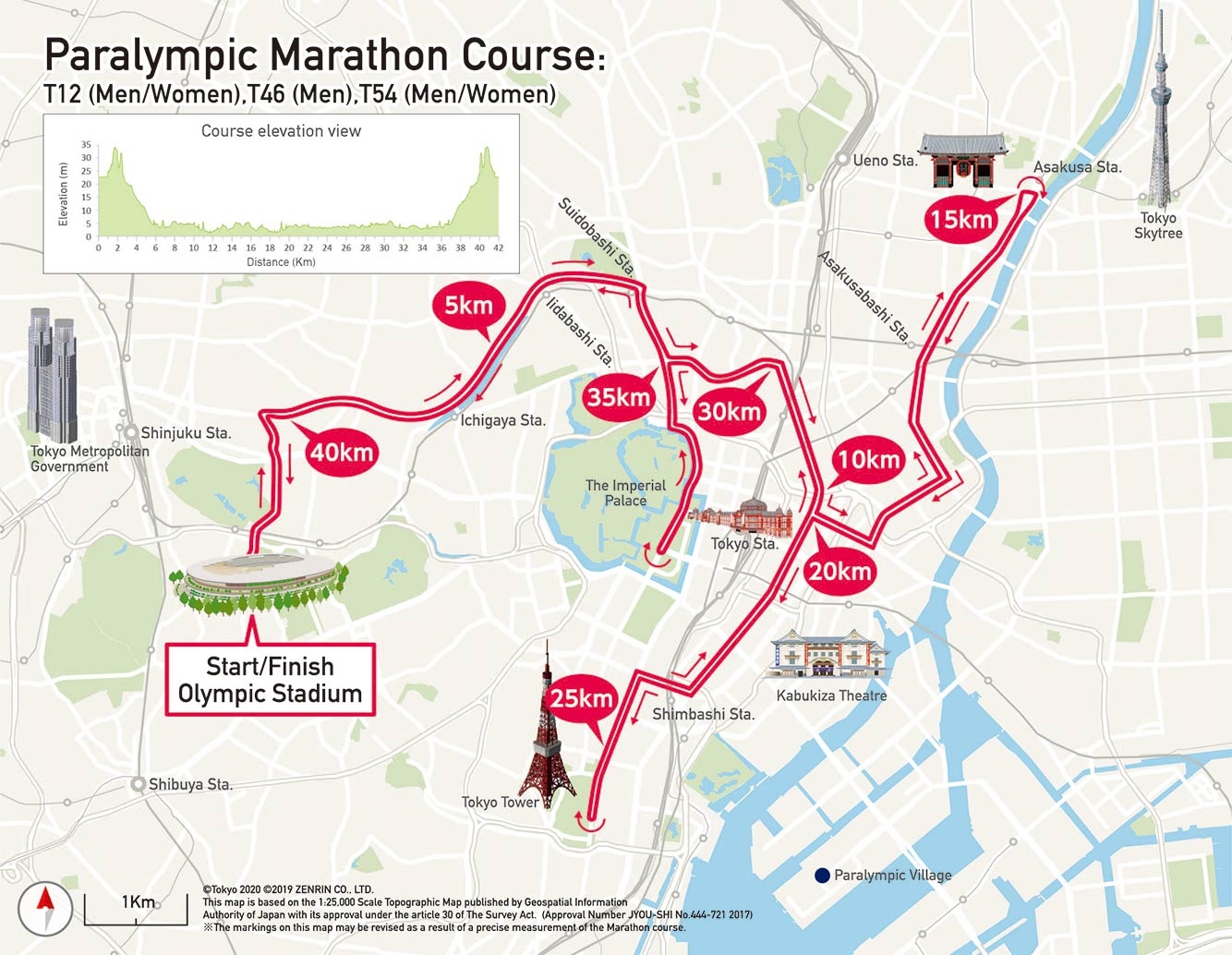
"VAN" (Sports Desk) :: The Tokyo Organising Committee of the Olympic and Paralympic Games (Tokyo 2020) today confirmed the route of the Paralympic marathon events, following its approval by the World Para Athletics organisation. For the first time in recent Paralympic history, the course will not only follow the same route as the Olympic marathon, but will start and finish at the same location too – Tokyo's new National Stadium (Olympic Stadium). It is hoped this will provide an unforgettable experience for the athletes and for the spectators who will cheer them on.
Traversing the heart of the Japanese capital, the route will take in famous Tokyo landmarks including the Kaminarimon (“Thunder Gate”) in Asakusa, the Imperial Palace, Ginza's upmarket Chuo Street, the Zojoii temple with the city's iconic Tokyo Tower as a backdrop, and Nihombashi bridge, the historic centre of the Japanese capital. The climax of the race will see para-athletes running the final stretch leading to the new Stadium uphill.
There will be five different marathon races; men and women's T12, for athletes with visual impairments; men's T46, for runners with upper limb deficiency); and men and women's T54, for those in wheelchairs other than cerebral palsy. All athletes will run the same course.
Haozhe Gao, Head of World Para Athletics, commented, “The Marathon is one of the highlights of the Para athletics programme. It is an amazing opportunity to engage with the fans as there actually are five different races to follow. At the same time, it is also special for the athletes as they will go across some of the most iconic parts of Tokyo before they return to the Stadium. I would like to thank the organisers for the work they have done and I am already looking forward to the races on 6 September next year.”
Akemi Masuda, President of Japan Para Athletics, commented, “I am very happy that the announcement of the Tokyo 2020 Paralympic marathon course falls so close to the “500 days to Go” milestone. It is an attractive course that will give athletes and spectators a real feel for the city of Tokyo. But the uphill stretch at the end will be very challenging, especially for wheelchair athletes – it may be the most exciting stage ever – and I think the athletes will therefore feel real elation as they enter the Stadium at the finish. Staging the Olympic and Paralympic marathons on the same course is a great idea – it's a course that will require the athletes to really use their brains, think about their pace and plan their strategy.”
Marathon para-athlete Hiroki Nishida commented, “Taking in the sights of Tokyo, the Tokyo 2020 Paralympic marathon course is going to be attractive for athletes from all around the world. I hope everyone will be able to appreciate the power, the speed and the never-ending tactics that are the hallmarks of wheelchair racing. The cheers of spectators along the road will help the athletes and give them a boost. Together with the athletes, let's make it a great race!” Misato Michishita, para-athlete and silver medallist at the Rio 2016 Paralympics Women's Marathon T12 event, added, “The route of the Tokyo 2020 Paralympic marathon comprises relatively clean asphalt road surfaces with several repeat stretches that will make it easy for blind runners to navigate. I am glad the course is well served by transportation networks, making it an environment that will be easy to reach and provide support to. It's also exciting to imagine blind runners competing on the same public roads as the Olympic marathon runners. On what will be the last day of the Paralympic Games, I sincerely hope that we can share the excitement with many spectators.”
Responses
Leave your comment